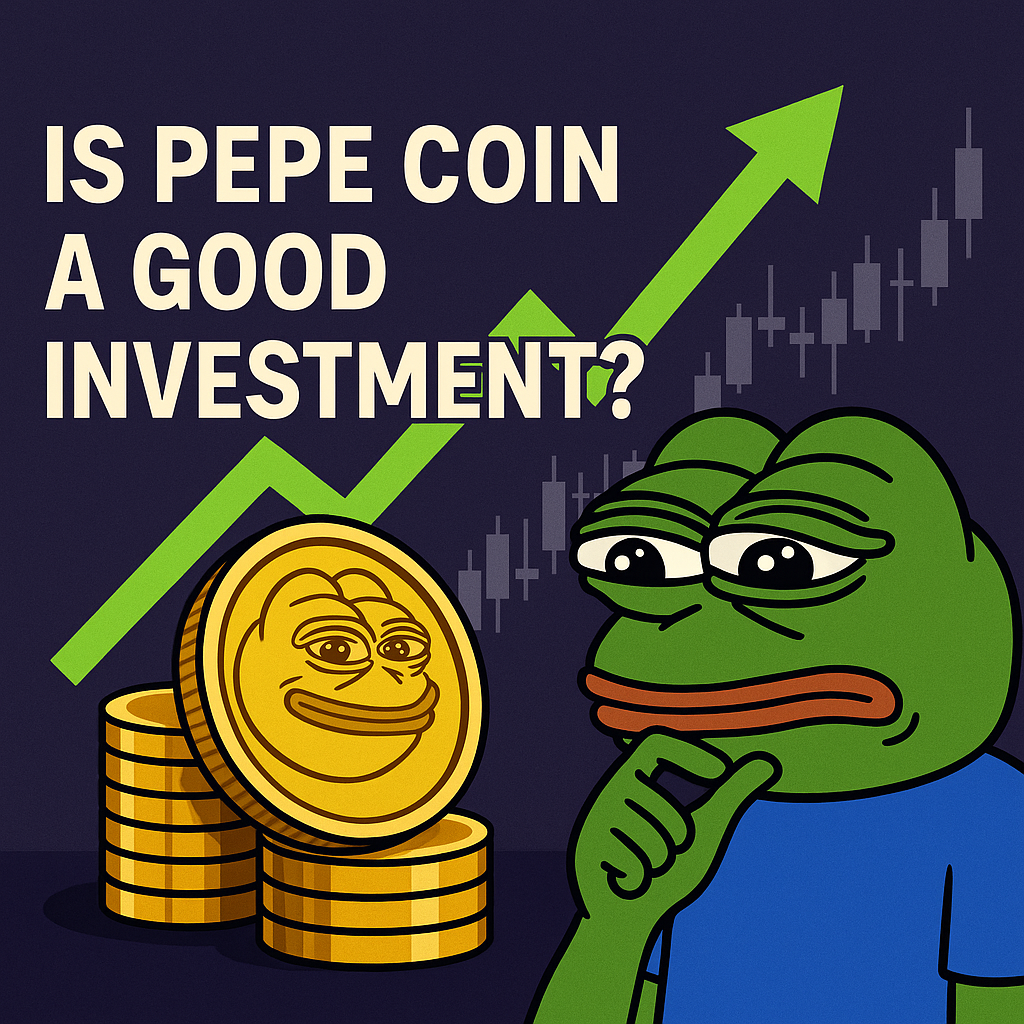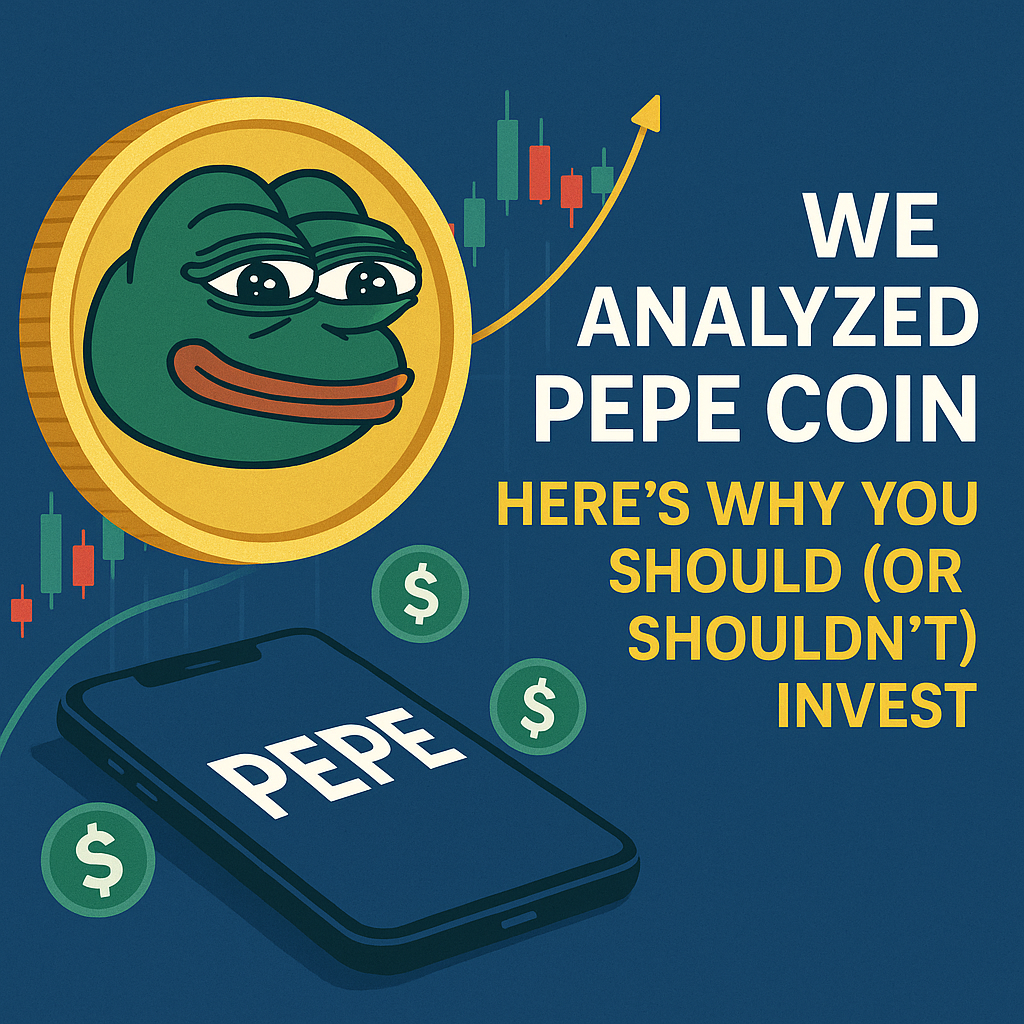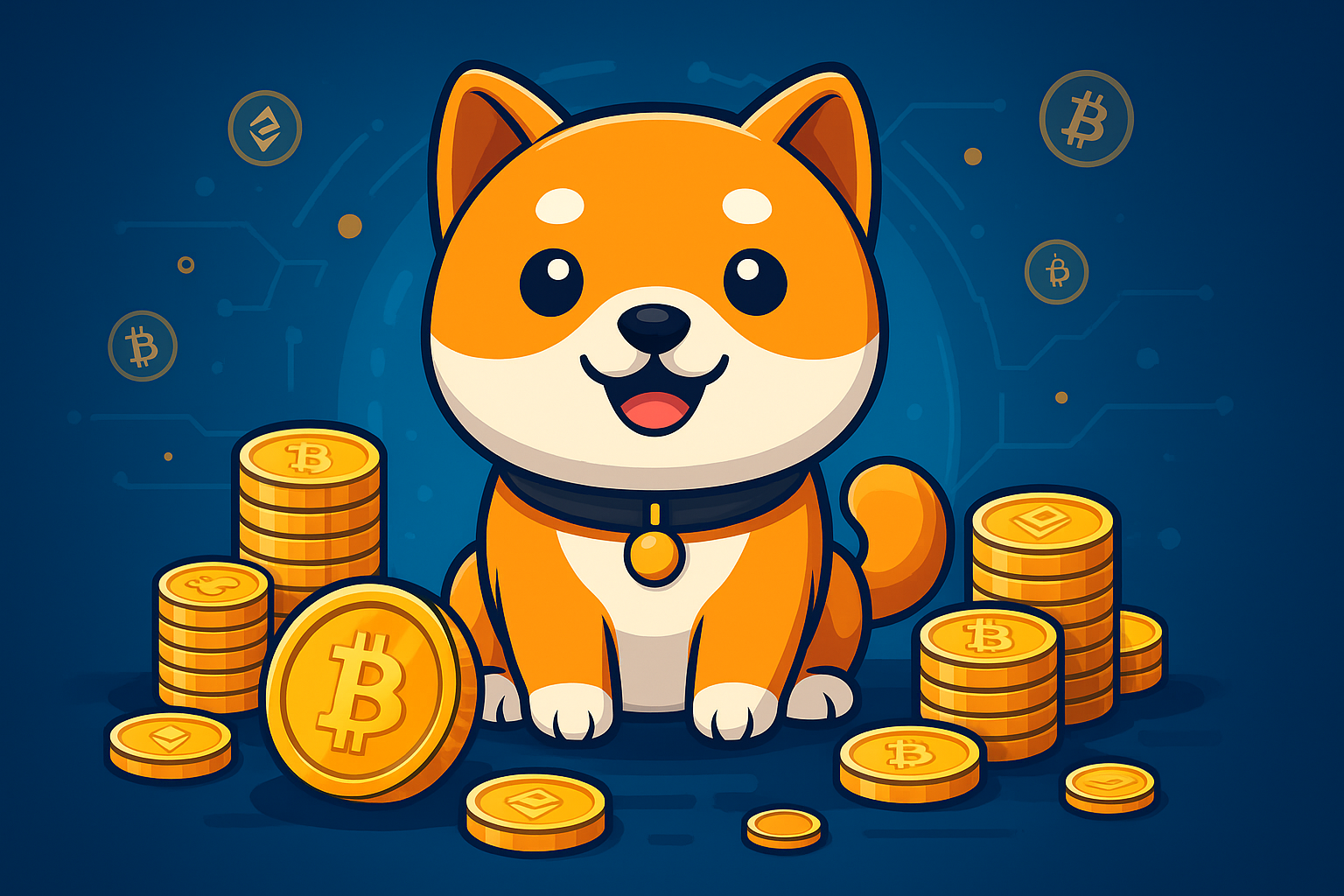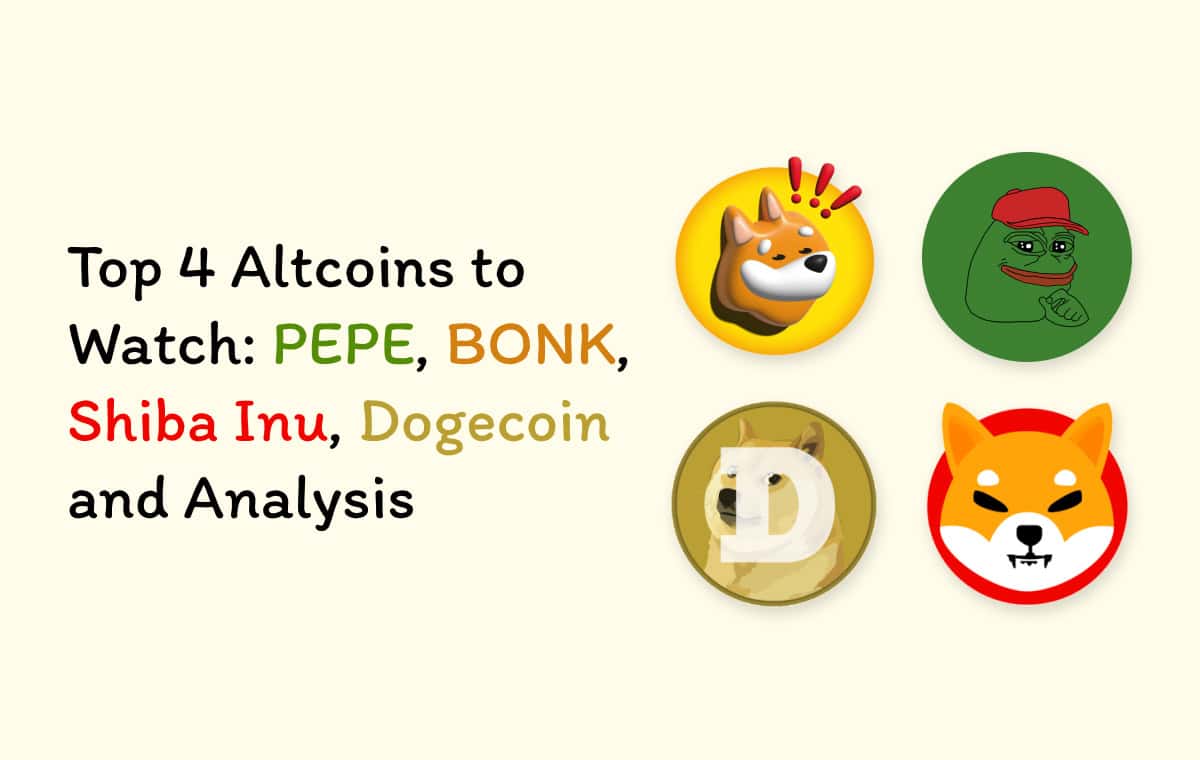Meme coins like Dogecoin and Shiba Inu started as internet jokes but have exploded in popularity, often seeing extreme gains and losses. The latest craze, Pepe Coin, emerged in 2023 and quickly became a trending topic in crypto communities. Named after the famous Pepe the Frog meme, this token captured attention with its rapid price surge (nearly 7,000% in its first 17 days) and a flood of social media buzz.
In this article, we’ll break down what Pepe Coin is and answer the burning question: “Is Pepe Coin a good investment?” We’ll explore its origins, the hype versus the risks, how it stacks up against other meme coins, and what experts and the community are saying. By the end, you’ll have a clearer idea of whether Pepe Coin fits into your crypto journey – or if it’s an investment you might want to ribbit out of.
What Is Pepe Coin? (Origin, Meme Culture, Tokenomics)
Pepe Coin (ticker $PEPE) is a meme-based cryptocurrency launched on the Ethereum blockchain in April 2023. It was inspired by the popular “Pepe the Frog” internet meme, tapping into meme culture to gain viral attention. In just a few weeks after launch, Pepe Coin’s market capitalization skyrocketed from virtually nothing to over $1 billion – a feat that took Dogecoin years to achieve. This meteoric rise was fueled by social media hype on platforms like Twitter (X) and Telegram, where the community (often called the “Pepe Army”) enthusiastically shared frog memes and success stories.
Tokenomics: Pepe Coin’s founders (who remain anonymous) designed it as an ERC-20 token with some unique features:
- Huge Supply & Deflationary Design: Originally, 420 trillion Pepe tokens were created (a nod to meme numbers). To increase scarcity over time, Pepe employs a burn mechanism – a small percentage of tokens is destroyed with each transaction. This means the supply is slowly shrinking. You can view burn stats on Etherscan.
- Redistribution to Holders: Pepe initially used a 1% redistribution on each transaction, rewarding long-term holders with extra tokens. (There have been talks of ending this, but it was a key early feature.)
- No Transaction Tax: Unlike some meme coins, there’s no buy/sell tax on Pepe trades. This makes trading frictionless, as users don’t lose a cut of their tokens to fees imposed by the token contract.
- No Intrinsic Utility: Importantly, Pepe Coin doesn’t represent a tech project or offer real utility – its value is driven purely by community interest and speculation. It’s “the most memeable memecoin,” as fans say, but it doesn’t have a platform or product behind it.
In short, Pepe Coin is a community-driven token born from internet meme culture. It rose from a fun idea into one of the top meme coins virtually overnight, purely on hype and FOMO (fear of missing out). Next, let’s directly tackle whether this frog-themed coin is a wise investment or just a risky meme-fueled gamble.
Is Pepe Coin a Good Investment?

This is the big question on many beginners’ minds, and the honest answer is: only if you understand the high risks involved. Pepe Coin is not a traditional “good” investment in the sense of stable growth or fundamental value. It’s a high-risk, speculative bet. Here’s a balanced breakdown:
- High Risk, High Reward Gamble: Pepe’s price history shows wild swings – it went from tiny fractions of a cent to a multi-billion-dollar market cap within weeks, then plunged 60% shortly after. Some early buyers made life-changing profits, but others who bought at the peak saw heavy losses. Investing in Pepe Coin is akin to gambling; you could see quick explosive gains, but you could just as easily lose a large portion of your money. There are no earnings or assets backing it – its price is driven by market sentiment alone.
- No Fundamental Value: Unlike Bitcoin or Ethereum, which have clear use-cases and adoption, Pepe has no intrinsic utility or underlying project. Its value relies entirely on the meme and community hype. Once the excitement fades, there’s little to prevent the price from dropping. Long-term investors looking for solid fundamentals or income (like staking rewards/dividends) won’t find it here.
- Answer in Plain Terms: For a typical retail investor (especially a beginner), Pepe Coin is not a “safe” or reliable investment. It’s extremely volatile and unpredictable. If you choose to invest, it should be with money you are fully prepared to consider spent (or lost). That said, some traders who thrive on high-risk, short-term trading may treat Pepe as a fun opportunity to try to ride momentum waves – but this requires experience and quick reflexes.
Pepe Coin is only a suitable investment for those willing to speculate and potentially lose it all. If you’re looking for a coin with strong fundamentals or a long-term growth story, Pepe probably isn’t it. However, if you understand the risks and are just looking to gamble on a meme for potentially high returns, it can be a thrilling but dangerous ride. Proceed with caution (and maybe a sense of humor), because Pepe is anything but a conventional investment.
Why Some People Are Investing in Pepe Coin (Potential Benefits)
If Pepe is so risky, why are so many people buying in? Despite the warnings, Pepe Coin has attracted thousands of investors who are hoping to strike it big. Here are some reasons why people are investing in Pepe Coin and what they perceive as its benefits:
- Outsized Profit Potential: The allure of turning a small sum into a fortune overnight is Pepe’s biggest draw. Early holders have shared unbelievable success stories – for example, a mere $100 invested at launch grew to over $30,000 within about a year. One trader famously turned $3,000 into $73 million by buying in super early. These viral tales of instant wealth create a gold rush mentality, making new investors hope that they might catch the next 1000% surge.
- Meme Hype & Community Buzz: Pepe Coin’s community is its lifeblood. The project leveraged the iconic Pepe the Frog meme, which has a huge existing internet fanbase. Enthusiasts rally on Twitter, Reddit, Telegram, and Discord, constantly sharing Pepe memes and trending hashtags. This strong online community (over 500,000 followers on Twitter/X by late 2023) creates momentum. Investors often join in due to FOMO, not wanting to miss out on “the next Dogecoin.” The meme culture makes investing in Pepe feel fun and community-driven, almost like being part of an inside joke that’s going viral.
- Major Exchange Listings: Pepe’s rapid rise led to listings on many popular crypto exchanges in record time. Within months, it became available on 320+ markets/exchanges worldwide, including big names. Notably, it got picked up by top exchanges like Binance, and even saw brief support on platforms like Coinbase and Robinhood for trading. These listings increased Pepe’s legitimacy and made it easier for regular investors to buy. High liquidity and accessibility are seen as positives – you can trade in and out of Pepe quickly, unlike some tiny tokens.
- “Innovative” Tokenomics & Cheap Price: Some investors are enticed by Pepe’s tokenomics quirks. The idea of a deflationary supply (tokens being burned) suggests that if demand stays up, the shrinking supply could drive prices higher over time. Pepe’s no-tax policy also means every trade is efficient. Additionally, Pepe’s price per coin is extremely low (fractions of a cent), allowing buyers to hold millions or billions of tokens. Psychologically, owning billions of something that might one day hit $0.01 feels exciting – even if the odds are long. This “lottery ticket” appeal (small cost, huge upside if it hits) is a key reason people throw a bit of money at Pepe.
- Part of the Meme Coin Movement: Beyond profits, some crypto enthusiasts invest in Pepe simply to participate in the meme coin phenomenon. It’s entertaining and engaging. They enjoy the ride, the jokes, the memes, and being part of a cultural moment in crypto. In a sense, investing in Pepe is also about having fun and embracing the unpredictable nature of internet-driven trends.
In essence, people invest in Pepe Coin for the chance at massive rewards and because the vibrant meme community makes it an appealing bandwagon to jump on. The potential benefits – huge gains, community camaraderie, and widespread exchange support – are compelling to many. However, as we’ll see next, there are also serious reasons to be wary.
Why You Might Want to Avoid It (Risks and Concerns)
While Pepe Coin’s hype is real, so are its risks. If you’re considering investing, it’s crucial to understand the downside. Here are the main reasons you might not want to put your money into Pepe Coin:
- Extreme Volatility: Pepe’s price movements have been nothing short of wild. Rapid spikes are followed by steep crashes. After its initial surge, the coin plunged about 60% from its peak within days, showing how quickly fortunes can reverse. Such volatility means you could lose a large chunk of your investment overnight. Meme coins have no price stability – they swing on hype and emotion, not fundamentals.
- No Intrinsic Value or Utility: Pepe has no real business or underlying utility backing it. It isn’t used for anything concrete like powering a blockchain application or providing a service. When you buy Pepe, you’re betting purely on the hope that someone else will buy it from you at a higher price. This is the “greater fool theory” at work – which is a very shaky foundation. If the community loses interest, there’s nothing else supporting the coin’s value, and it could collapse. In other words, it’s a meme with a price tag, not an investment in a productive asset.
- Anonymous Team & Trust Issues: Pepe Coin’s creators are unknown, which is common in meme coins but still a concern. An anonymous dev team means if something goes wrong (like a hack or rug-pull), there’s no accountable entity. In August 2023, the community was rattled by a mysterious transfer of 16 trillion PEPE tokens (worth ~$15 million) from the project’s multi-sig wallet to exchanges. This looked suspiciously like insiders dumping tokens. The official Pepe team claimed that some rogue developers stole and sold those tokens, and those devs were then removed. Regardless of the explanation, it eroded trust – Pepe’s price dropped and many holders were alarmed. This incident shows the risk of behind-the-scenes actions in a project with little transparency.
- Oversupply and Diminishing Returns: Pepe’s astronomically large supply (hundreds of trillions of tokens) means the price per token will likely remain very low. While deflationary burns help, it’s nearly impossible for Pepe to reach big prices like $0.1 or $1 – doing so would require a market cap in the hundreds of trillions of dollars (far larger than the entire crypto market). Some investors who don’t understand market cap might be holding out for unrealistic price targets. The risk is they never materialize, leaving late buyers holding bags of nearly worthless tokens.
- Scam Potential and Copycats: The explosive success of Pepe has spawned many copycat tokens (even one literally called “Pepe 2.0”). Scammers may create fake Pepe lookalikes or phishing schemes to exploit the hype. New investors risk buying the wrong “Pepe” or falling for rug-pulls in similar meme coins. Even within Pepe, whales (big holders) could manipulate the market – for example, by pumping the price then dumping. Regulatory scrutiny is also a concern; regulators have warned about meme coins being used in pump-and-dump schemes, so crackdowns could come, which would crash speculative tokens like Pepe.
- Unpredictable Meme Lifespan: Memes are fickle. Today’s hottest meme can become old news next month. There’s no guarantee that the Pepe meme will retain its popularity in the long term. If the crowd moves on to a new meme coin or gets bored, Pepe could stagnate or tumble. Unlike established coins that have development roadmaps or tech upgrades to drive interest, Pepe’s fate is tied entirely to pop culture trends and community whim.
Investing in Pepe Coin carries significant risks – from wild price swings and lack of fundamental value to trust concerns and the ephemeral nature of memes. Many people do lose money on such coins. It’s crucial to go in with eyes open (and only money you can afford to lose) if you decide to touch Pepe. For many, these red flags are enough to steer clear of this frog-themed token entirely.
How It Compares to Other Meme Coins (Pepe vs. DOGE vs. SHIB)
Pepe Coin joins an arena crowded with famous meme coins like Dogecoin and Shiba Inu, each with its own story and community.
How does Pepe stack up against the more established meme coins like Dogecoin (DOGE) and Shiba Inu (SHIB)? Here’s a quick comparison:
- 🐕 Dogecoin (DOGE): Dogecoin is the original meme coin, created in 2013 as a joke featuring the Shiba Inu dog meme. It has since grown into a top-10 cryptocurrency with a market cap often around $10+ billion. Doge runs on its own blockchain, uses Proof-of-Work mining (like a lighter version of Bitcoin), and has an inflationary supply (about 5 billion new DOGE are minted each year). Over the years, Dogecoin gained mainstream recognition – helped by endorsements from Elon Musk and others – and is even accepted by some merchants for payments. It’s considered relatively “stable” (by meme coin standards) and has an eight-year track record. Compared to Pepe, Dogecoin has a much more established community and recognition outside crypto circles. However, Doge’s price movements are slower; it didn’t skyrocket 100x overnight like Pepe did, but it also hasn’t crashed as brutally. Doge is seen as the most “legit” meme coin due to its longevity and widespread usage.
- 🐶 Shiba Inu (SHIB): Shiba Inu, launched in 2020, was nicknamed the “Doge Killer.” It’s an ERC-20 token (like Pepe) running on Ethereum. SHIB started as pure meme hype, boasting a quadrillion token supply. However, its developers tried to build an ecosystem around it – including a decentralized exchange (ShibaSwap), NFT projects, and even a metaverse and layer-2 network (Shibarium). Shiba Inu had a sensational rise in 2021, at one point hitting a market cap over $40 billion, though it later settled around the single-digit billions. Compared to Pepe, SHIB has attempted to add some utility and long-term vision beyond memes. It also benefited from the Doge hype wave and had heavy social media promotion. While SHIB’s community is still strong, its growth has slowed, and it faces its own volatility. Pepe’s rise was faster and arguably more purely hype-driven (with no promises of an ecosystem initially), whereas Shiba Inu is now somewhat more than “just a meme coin.”
- 🐸 Pepe Coin (PEPE): Pepe is the new contender (launched 2023) and quickly became the third-largest meme coin by market cap, behind Doge and SHIB. It runs on Ethereum like SHIB, but with different tokenomics (deflationary vs. Shib’s mostly fixed supply). Pepe’s initial growth outpaced what Doge or SHIB experienced in the same time frame, highlighting the power of meme culture and viral marketing in 2023. However, Pepe is also riding on the trail blazed by Doge and SHIB – investors are already primed to chase the “next meme coin,” which helped Pepe gain traction. In terms of community, Pepe’s is young but enthusiastic; still, it’s not as battle-tested or as large as Dogecoin’s community. As for longevity, Doge has survived many market cycles, SHIB has navigated a couple, while Pepe hasn’t yet seen how it fares in a prolonged bear market. A key difference is branding: Doge and SHIB are dog-themed (which became a whole crypto meme subgenre), whereas Pepe brings a new meme (the frog) into crypto prominence. This gave it a fresh appeal, though also a more niche cultural reference.
Bottom Line: Dogecoin remains the king of meme coins with the most mainstream presence, Shiba Inu has carved out the #2 spot by trying to mix meme appeal with real projects, and Pepe is the wild new upstart that shot up in value purely through meme power. If Doge is the “blue-chip” meme coin and SHIB is the ambitious meme token turned semi-functional, Pepe is the ultra-speculative meme sensation. All three are driven by community sentiment, but Doge and SHIB have slightly more established profiles. Investors view Doge as comparatively lower risk (though still risky) and Pepe as the riskiest but with maybe higher short-term upside. It’s also worth noting that meme coins often don’t directly compete; many traders hold all three, treating Pepe as the latest fun gamble while still rooting for Doge and SHIB. Pepe’s challenge will be proving it can sustain interest like its dog-themed predecessors did.
What Experts and Communities Are Saying (Social Sentiment & Analyst Views)

The conversation around Pepe Coin is polarizing. On one hand, the community and social media are buzzing with excitement; on the other, many experts urge caution. Here’s a look at the sentiment from both sides:
- Social Media Buzz: Crypto Twitter, Reddit forums, and Telegram groups are full of Pepe memes and bullish chants. Many community members are passionately optimistic, proclaiming Pepe as the next big thing. It’s common to see posts of users showing off gains or predicting that Pepe will “go to the moon.” This grass-roots enthusiasm and virality – “Let’s make memecoins great again,” as Pepe’s tagline goes – have been critical in driving Pepe’s rise. The coin’s official channels tout achievements like exchange listings and trending hashtags. For a lot of meme coin enthusiasts, investing in Pepe is as much about being part of a viral movement as it is about profit. The community sentiment can be summarized as playfully bullish – people know it’s mostly hype, but they’re enjoying it and hoping to collectively push the coin’s value up through sheer meme power.
- Influencers and Hype Drivers: Some crypto influencers and YouTubers have jumped on the Pepe train, adding to the hype. They share price predictions or speculate that Pepe could rival Shiba Inu’s market cap or more. These voices (often self-interested if they hold Pepe) contribute to a FOMO atmosphere. However, it’s worth noting that in late 2023, after the initial boom, hype tempered a bit; Pepe wasn’t constantly trending like in its first months, but it still maintains a solid buzz whenever crypto markets heat up or when a new meme coin season kicks off.
- Analyst and Expert Caution: Many analysts and seasoned crypto investors take a more skeptical view of Pepe. They point out, as we have, that Pepe is purely speculative with no fundamental value and thus extremely risky. For instance, experts often note that memecoins tend to thrive during short-lived hype cycles but historically have poor long-term performance once the excitement fades. Some analysts compare Pepe to a lottery ticket or a bubble that could burst at any time. After the token transfer controversy (the 16 trillion token incident), analysts warned that even insiders might not fully trust the project, and urged caution about potential further dumps or issues. Financial advisors generally discourage people from putting significant money into such assets, emphasizing that it’s closer to gambling than investing.
- Quotes & Perspectives: To quote a Reuters commentary on the memecoin phenomenon: “‘Memecoins’ – a hyper-speculative, ultra-volatile and somewhat peculiar class of crypto – lack practical use beyond speculation, distinguishing them from more ‘mainstream’ coins”. This captures the professional sentiment: Pepe is seen as part of a speculative frenzy. Some crypto journalists and researchers have noted that while Pepe’s run was impressive, it’s largely driven by market conditions (e.g. memecoins tend to pump when bitcoin is boring) and by community antics, rather than any sustainable value. In short, enjoy the meme, but don’t delude yourself into thinking it’s a sound investment, they imply.
- Community vs. Expert Divide: The Pepe community often pushes back at naysayers with the mantra “it’s all in good fun” – acknowledging the risks but embracing the chaos. Meanwhile, experts caution newcomers especially to not get swept up by hype: a common refrain is “Don’t invest more than you can afford to lose in Pepe (or any meme coin)”. Even some experienced traders who made money on Pepe have publicly stated that taking profits is wise and that holding such a coin long-term is very risky.
The social sentiment around Pepe Coin is exuberant and optimistic within its community, fueling the coin’s meme-fueled journey. However, most experts and analysts remain wary, labeling Pepe a speculative fad that could implode. Both perspectives agree on one thing: Pepe’s fate ultimately depends on the community’s continued interest. If the meme stays strong, the community sentiment could keep it alive (or pumping) for a while – but if the crowd moves on, no amount of expert analysis will save a meme coin whose time has passed. As an observer or investor, it’s wise to balance the infectious enthusiasm with some healthy skepticism from the experts.
For crypto education and how to evaluate altcoins, visit Binance Academy
How to Stay Informed and Invest Responsibly
If you decide to venture into Pepe Coin or similar meme coins, it’s essential to do so carefully. Here are some tips to stay informed and invest responsibly in this wild corner of crypto:
- Do Your Own Research (DYOR): Don’t just buy because it’s trending. Take time to understand what Pepe Coin is (you’re off to a good start by reading this!). Read the project’s website, its Ethereum contract details, and reputable articles or analyses. Knowledge is your first line of defense against making impulsive decisions. By researching, you might discover red flags or gain conviction in why (or why not) Pepe is worth it.
- Follow Official Updates: Stay tuned to official Pepe Coin channels for news. Follow their official Twitter (X) account and join their Telegram or Discord. Meme coin projects often announce exchange listings, burns, or community events through social media. However, be cautious of scams – always verify you’re following the real official accounts (look for the correct handle and lots of followers). This will help you get information straight from the source and quickly know if something significant (good or bad) happens.
- Gauge the Community & Sentiment: Since community is key for meme coins, lurk in forums or social media discussions to gauge the current sentiment. Are people still excited? Is interest growing or waning? Sites like CoinGecko or CoinMarketCap show metrics like trading volume and community scores which can hint at activity levels. Just remember, sentiment can flip fast – but staying engaged will prevent you from being the last to know if the party’s ending.
- Invest Only What You Can Afford to Lose: This is perhaps the golden rule of meme investing. Given Pepe Coin’s speculative nature, treat any money you put in as play money. Never invest rent money or savings you can’t lose. A good practice is to allocate only a small percentage (for example, <5%) of your crypto portfolio to such high-risk coins. This way, if Pepe moons, great – it’ll still boost your overall portfolio. If it tanks, it won’t ruin you financially.
- Consider Taking Profits: If you do get in and Pepe’s price shoots up, have a plan to take some profits. Greed can be dangerous; many people watched paper gains evaporate by not selling at least a portion when they were up. You don’t have to sell all, but consider selling enough to recoup your initial investment or to secure some profit. This way you’re “playing with house money” on the rest.
- Use Secure Platforms: Only trade Pepe on reputable, secure exchanges or decentralized platforms. If using decentralized exchanges (DEXes) on Ethereum, double-check you have the correct token contract address to avoid scam tokens. If you hold a significant amount, consider using a secure wallet (hardware wallet or trusted software wallet) to store your tokens safely. The crypto world can be prone to hacks and phishing; basic security (never share your seed phrase, etc.) is crucial.
- Don’t Fall for Hype Alone: Be wary of unsolicited tips, “insider” predictions, or social media pump groups. If something sounds too good to be true (“Pepe to $1 next week!”), it almost certainly is. Stick to your own analysis. Emotional decision-making is the enemy of responsible investing. If you find yourself feeling FOMO or panic, step back and reassess calmly.
- Stay Updated on Market Trends: Meme coins like Pepe often move with broader market trends or meme cycles. If the overall crypto market is turning bearish, meme coins usually are the first to drop. Conversely, in a frothy market, they can spike. Keep an eye on Bitcoin and Ethereum’s performance and news that might affect crypto sentiment (like regulatory news, Elon Musk tweets, etc.). This broader context will help you make more informed timing decisions.
- Learn from the Experience: Whether you win or lose on Pepe, treat it as a learning experience. Reflect on what went right or wrong. This can improve your future investing strategy. Responsible investing is a journey – even dabbling in high-risk coins can teach valuable lessons about risk management, market psychology, and your own tendencies.
By following these guidelines, you can participate in the meme coin mania more safely. Responsible investing doesn’t mean you can’t have any fun or take any risks – it just means managing those risks and staying informed every step of the way. Pepe Coin, like any speculative asset, requires vigilance and prudence.
For news coverage and analysis, refer to CoinDesk.
FAQs
Is Pepe Coin safe to invest in?
Pepe Coin is not a safe investment in the traditional sense. It’s extremely volatile and can swing drastically in price in short timeframes. There is also no regulatory protection or underlying asset backing it. Think of it as a high-stakes gamble – only as “safe” as the money you’re willing to possibly lose. If you do invest, use only a small amount of discretionary funds and be prepared for the possibility that you could lose it. Pepe is high-risk, high-reward and thus not considered a safe or stable investment by most financial standards.
Can Pepe Coin go mainstream?
Going mainstream would mean Pepe being widely adopted or recognized outside of crypto circles. At the moment, that’s a long shot. Dogecoin achieved a level of mainstream fame (thanks to celebrities and being around for years), but even Doge isn’t widely used for commerce. Pepe Coin is primarily an internet/meme community phenomenon right now. While it did get attention in the news due to its price surge, it hasn’t shown any utility that would make it part of mainstream finance or everyday transactions. That said, it’s not impossible for the meme to grow — if, for example, a major influencer or company started endorsing Pepe, it could gain more general public awareness. However, expecting Pepe to become a commonly accepted currency or a household name like Bitcoin is highly speculative. In all likelihood, Pepe will remain a niche crypto meme coin; popular among crypto enthusiasts, but not something with mainstream use or acceptance.
What makes Pepe Coin different from Dogecoin?
While both are meme coins, Pepe Coin and Dogecoin have several key differences:
- Origin & Meme Theme: Dogecoin is based on the Doge/Shiba Inu dog meme and launched in 2013, making it one of the oldest meme coins. Pepe Coin is based on the Pepe the Frog meme and launched in 2023, so it’s much newer on the scene with a different cultural origin.
- Blockchain vs. Token: Dogecoin runs on its own blockchain (similar to Litecoin’s code) and is mined through Proof-of-Work. Pepe is an ERC-20 token on Ethereum, meaning it relies on the Ethereum network for security and transactions (no separate Pepe blockchain).
- Supply & Tokenomics: Dogecoin has no fixed supply cap; it adds 5 billion new DOGE coins each year (inflationary). Pepe started with a fixed large supply (~420 trillion tokens) and incorporates a burn mechanism to reduce supply over time (deflationary). Also, Pepe had that 1% redistribution feature (rewarding holders), whereas Doge has no such mechanism.
- Utility & Development: Dogecoin was created as a joke and for years had no development, but it’s so widely held now that there’s talk of adding utility (and it’s used for tipping/donations). Pepe was created purely as a meme coin too, and aside from its roadmap of community growth, it doesn’t have a specific utility. However, Dogecoin has seen more real-world usage (e.g., some stores accepting it, Tesla merchandising, etc.), whereas Pepe is still purely speculative with no merchant adoption.
- Community & Support: Dogecoin’s community is large and has been around for nearly a decade, with endorsements from figures like Elon Musk giving it a boost. Pepe’s community is new but very enthusiastic on social media. Pepe doesn’t yet have a high-profile figurehead or widespread recognition outside of crypto meme circles. It rose to prominence very fast, whereas Doge’s growth was gradual over years (until the 2021 boom).
- Price Behavior: Dogecoin, being more established, tends to have less explosive moves compared to brand-new coins; it can still surge (as seen in 2021) but it’s relatively more stable and liquid. Pepe has had more explosive short-term gains (and drops) because it started from a tiny market cap and caught fire quickly.
In essence, Dogecoin is the OG meme coin with its own chain and a long-standing community, while Pepe is a newer Ethereum-based token riding a fresh meme wave. Both share the similarity that their value comes from community belief and humor rather than any inherent utility. For an investor, Dogecoin might be seen as slightly less risky (more history, more liquidity), whereas Pepe is a very high-risk, potentially high-reward newcomer.
Is Pepe Coin backed by a real project or just a meme?
Pepe Coin is essentially just a meme-based token, not a project with underlying tech or business. It isn’t like investing in a company stock or a crypto project that’s building a platform. There’s no Pepe blockchain (it uses Ethereum’s), no DeFi protocol or game or application tied to Pepe coin usage. The purpose of Pepe Coin is mainly to be traded as a cultural/meme asset. The developers did outline a roadmap, but the goals were meme-centric (like community growth, Pepe merchandise, possibly a Pepe Academy for crypto education as per some community notes). These are more about marketing and community engagement than technology. Pepe’s value doesn’t come from cash flows or adoption in some ecosystem – it comes from people’s collective desire to buy a frog-themed coin and hopefully sell it later at a higher price. So, aside from the tokenomics (burns, etc.) which we discussed, there’s no fundamental “project” behind Pepe that generates value. It’s backed by the meme, the community, and speculative fervor. If you’re investing in Pepe, you’re basically betting on the meme’s popularity rather than a tangible product or service.




